You may have seen or heard on the news that the UK is seeing higher rates of scarlet fever than would be expected for this time of year. Scarlet fever is usually a mild illness, but it is highly infectious.
What is Group Strep A?
Group Strep A are bacteria that can cause scarlet fever. These bacteria also cause other respiratory and skin infections such as strep throat and impetigo (a skin infection). These are usually mild illnesses, which although highly infectious, can be managed at home, sometimes needing antibiotics.
In very rare occasions, the bacteria can get into the bloodstream and cause a much more serious infection called invasive Group A strep (iGAS). This is very uncommon, but there has been an increase in invasive Group A strep cases this year, particularly in children under 10. Increases in cases of scarlet fever generally lead to an increase in iGAS too, however, the risk of iGAS remains extremely low.
Spread and prevention
Group A strep is spread by close contact with an infected person. It can be passed on through coughs and sneeze or from a wound. It’s important to:
- Ensure your child washes their hands properly with soap and warm water for 20 seconds
- Teach your child to catch coughs and sneezes into a tissue, or into their elbow
- Keep your child away from others when they are feeling unwell
- Ensure any cuts or scrapes are thoroughly cleaned and covered with waterproof dressings to help prevent invasive infection
Symptoms of scarlet fever
Scarlet fever is much more common in children than adults, although people of any age can get scarlet fever (and you can have it more than once). We are asking people look out for signs of scarlet fever, and not to send their children into school if they have any of the following symptoms:
- Sore throat
- Headache
- Strawberry tongue or tonsils (swollen or bumpy or covered in white spots)
- A fine, pinkish or red body rash with rougher skin that feels like sandpaper. On darker skin the rash may be more difficult to see but the sandpapery feel will be present.
Example images
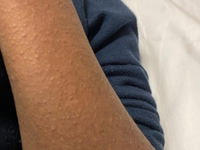
(image credit: Don’t forget the bubbles)
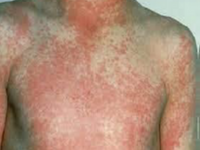
(image credit: NHS)
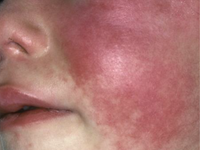
(image credit: NHS)
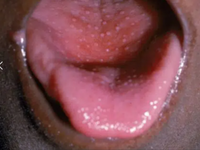
(image credit: Skinsight)
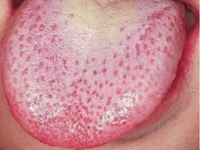
(image credit: NHS)
If a child has a severe sore throat, or rash as above take medical advice. If they have been diagnosed with scarlet fever, they should not attend nursery/school for at least 24 hours after the start of antibiotic treatment to avoid spreading the infection to others.
Children who have had chickenpox recently are more likely to develop more serious infection during an outbreak of scarlet fever and so parents/guardians should remain vigilant for symptoms such as a persistent high fever, cellulitis (skin infection) and arthritis (joint pain and swelling). If you are concerned for any reason, seek medical assistance immediately. All children with chickenpox should remain off school/nursery until at least 5 days after the start of their rash AND until all their spots have crusted over. For more information on Scarlet fever, visit the NHS website.
Seeking help
Contact NHS 111 or your GP if you suspect your child has scarlet fever, because early treatment with antibiotics is important to reduce the risk of complications, such as pneumonia or a bloodstream Infection. If your child has scarlet fever, keep them at home until at least 24 hours after the start of antibiotic treatment to avoid spreading the infection to others.
As a parent, if you feel that your child seems seriously unwell, you should trust your own judgement. Contact NHS 111 or your GP if:
- Your child is getting worse
- Temperature has lasted more than 5 days
- Your baby is under 3 months and has a temperature of 38C, or is older than 3 months and has a temperature of 39C or higher
- Your child is feeding or eating much less than normal
- Your child has had a dry nappy for 12 hours or more or shows other signs of dehydration such as dark yellow, strong-smelling pee, peeing less often than usual, feeling dizzy or lightheaded, feeling tired, sunken eyes or dry mouth, lips, tongue
- Your baby feels hotter than usual when you touch their back or chest, or feels sweaty
- Your child is very tired or irritable
Call 999 or go to A&E if:
- Your child is having difficulty breathing – you may notice grunting
- Noises or their tummy sucking under their ribs
- There are pauses when your child breathes
- Your child’s skin, tongue or lips are blue
- Your child is floppy and will not wake up or stay awake
- Your child has severe pains in their arms, legs, neck or back
- Your child has a painful, red area of skin, especially if it is getting bigger quickly
Posted on Wednesday 14th December 2022